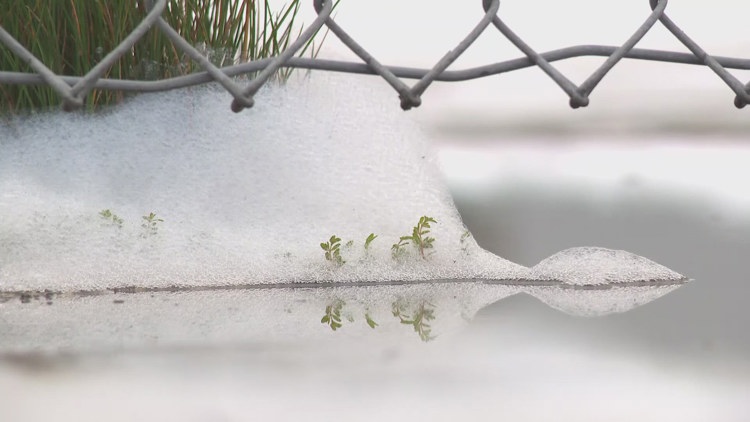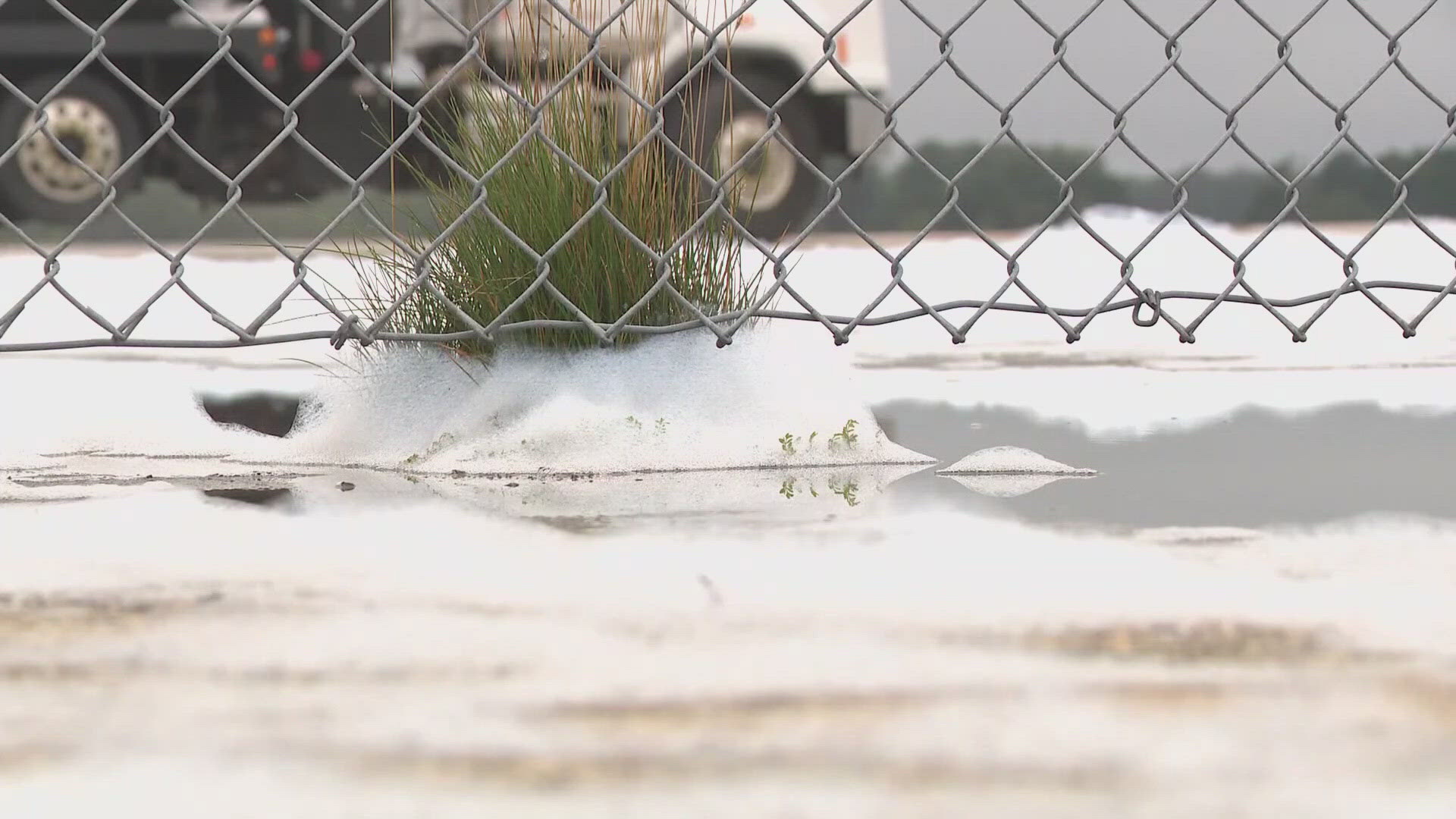BRUNSWICK, Maine — Water sampling in Brunswick continued this week in response to the toxic firefighting foam spill that happened at Brunswick Landing last month.
On Aug. 19, approximately 1,450 gallons of aqueous film-forming foam mixed with 50,000 gallons of water was released at the Brunswick Executive Airport from Hangar 4, the Maine Department of Environmental Protection (DEP) said in an Aug. 21 news release.
Clean-up efforts to mitigate environmental and public harm have been underway since the spill. The DEP established a Unified Command and Joint Information Center in Brunswick "to coordinate response and disseminate information" related to the spill, according to the Aug. 21 release.
This week, DEP staff went door-to-door for several days, sampling private water supplies at homes along Coombs Road, the DEP said Thursday in an updated news release.
The testing occurred along that road "from the southern intersection with Gurnet Road up to roughly a quarter mile past the intersection with Hawkins Lane, including properties on Hawkins Lane and Purinton Road," according to the release.
Department staff continued sampling at seven surface water locations along the drainage system and in Harpswell Cove.
The DEP said during the process, samples from 33 water supplies were collected for PFAS testing.
PFAS, or per- and polyfluoroalkyl substances, are better known as "forever chemicals," and they are harmful to the environment, according to the U.S. Environmental Protection Agency. The chemicals also take a long time to break down in the environment, causing long-lasting impacts.
"Contact and sampling information was left for property owners that Department staff were not able to contact so that follow-up sampling can take place," the release stated.
Seven homes in the targeted area were serviced by public water and did not require PFAS sampling or testing. One property owner with a private water supply did not want to be sampled, the DEP said.
"Additional surface water sampling results have been received by the Department documenting conditions up to ten days following the release. These results show that PFAS concentrations are decreasing in the upper portions of the surface water drainage, closest to the release location, and at the confluence of Mare Brook and Merriconeag Stream," the release stated.
As of Thursday, the DEP said PFAS concentrations have increased at the outlet of Picnic Pond due to the "forever chemicals" moving through the drainage system. The DEP added it could also be because the pond acts as an impoundment with a slower rate of flushing.
In the salt marsh above Harpswell Cove, PFAS concentrations appear to have increased since initial sampling, the environmental agency said.
"This is likely to represent residual contamination that migrated to this area which is moving slowly through the system due to tidal cycling and natural flow," the release stated. "One set of sample results contain samples from Harpswell Cove (SW-67 and 68). Low levels of PFAS were detected in these samples indicating that residual contamination has reached the cove."
Midcoast Regional Redevelopment Authority (MRRA), which oversees the area where the spill happened, is continuing to check for foam along the stormwater drainage ponds. The DEP said no foam has been discovered or collected since Sept. 6.
The public drinking water supply at Brunswick Landing, which comes from the Brunswick-Topsham Water District, has been deemed safe to drink and has not been impacted by the spill, according to the release.
"The Maine CDC advises the public to avoid contact with foam, and to exercise caution and abstain from any recreational activities (such as swimming, boating, and wading) that may come into contact with the foam or waters until the possible effects of the AFFF release on waterbodies in the vicinity have been thoroughly evaluated," the DEP explained.
You can view test results on the DEP website here.
For more information, contact DEP Deputy Commissioner David R. Madore at david.madore@maine.gov



